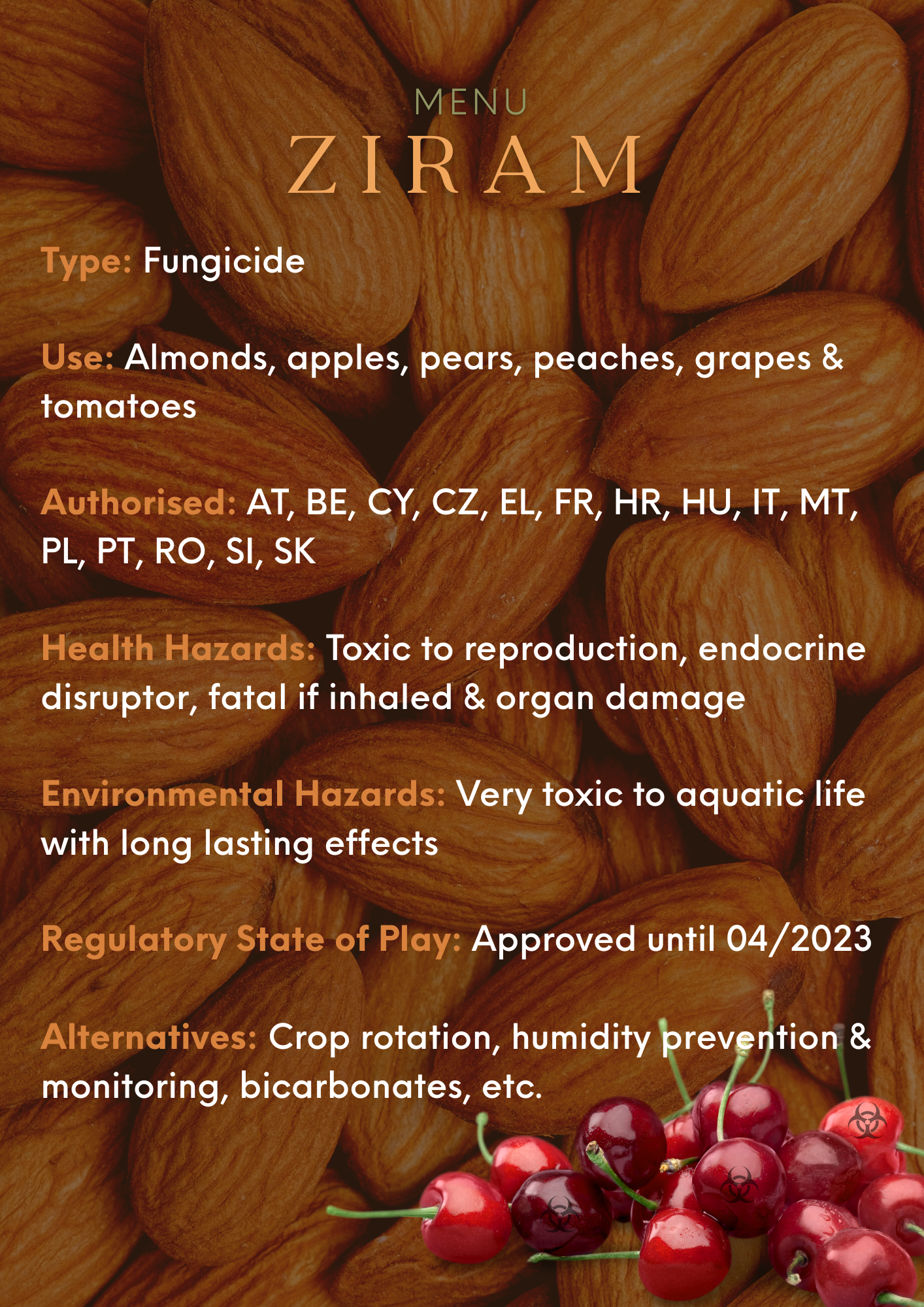Type: Fungicide/ Repellent
Health Hazards: Acutely toxic in short term exposure, fatal if inhaled, severe skin bruns and eye damage. Reproductive effects and fetal development deregulation. Many negative findings on endocrine glands and hormones. Endocrine disruptor according to the EU Joint Research Centre (JRC).
Environmental Hazards: High risk for aquatic organisms and non-target arthropods.
Exposure: Authorised in 15 member states: AT, BE, CY, CZ, EL, FR, HR, HU, IT, MT, PL, PT, RO, SI, SK
Residues present in food: 3 Maximum Residue Limits (MRLs) above the Level of detection (LOD) of 0.01 mg/kg are established, ranging from 1.00 mg/kg to 5.00 mg/kg per product.
Regulatory State of Play: Following nine “unjustified” prolongations approved until 30/04/2023.
Use: Sprayed on fields outside, for example, on cherries or almond trees, before and during flowering and after harvest
Alternatives: Crop rotation, humidity prevention & monitoring, bicarbonates, include resistant varieties, etc.
